SIGGRAPH 1989: Art Show
Chair(s):
- Mark Resch
-
- Rensselaer Polytechnic Institute
Location:
Boston, Massachusetts, United States of America
Dates:
July 31st - August 4, 1989
Art Show Overview:
I welcome you to the SIGGRAPH ’89 Art Show on behalf of the SIGGRAPH ’89 conference committee.
This year’s show is the result of strong international response to SIGGRAPH’s call for computer art. Jurors from Austria, Canada and the United States selected 80 pieces from a much larger group of entries. The works represent a broad range of styles and techniques and include two-dimensional works, sculptures, books, interactive installations and videotapes.
The essays included in this catalog consider the question of the context of computer art today. The authors hold a wide range of views and grapple with notions of computers and art from a broad perspective. Questions of the context of computer art remain.
The computer art community is a vital community, with varied interests, opinions and visions. I am pleased and excited to share works by members of this community. I thank all who have participated by volunteering labor, essays or artworks. Their contributions make the show.
Once again, welcome to the SIGGRAPH ’89 Art Show.
Mark Resch
SIGGRAPH ’89 Art Show Chair
Committee(s):
- Rachel E. Carpenter
- Phil Getto
- Copper Frances Giloth
-
- Real Time Design
- University of Massachusetts/Amherst
- Kathy Rae Huffman
-
- Independent Media Art Curator
- Oliver Strimple
- Jane Veeder
-
- San Francisco State University
General Committee:
Visual Proceedings:
View PDF: [SIGGRAPH 1989: Art Show] - 29.9MB
Additional Information:
Art evolves with and is influenced by the development of many technologies and many diverse media. While histories of specific media exist, we rarely consider art history in terms of the history of the technologies employed by artists. Rather, we consider the art tradition part of the cultural and historical moment. Until recently there has been a tendency to conceptualize the historical framework of computer art in terms of technology. This is understandable, since the history of computers must be a history of the evolution of technology, and a common view holds that computer artists find more acceptance from the computer community than from the art community. Recent discussion about the relationship between computer art and the mainstream artworld prompted the SIGGRAPH ’89 art show committee to call for, and here to present, essays about the context of computers and art as well as reproductions of the artworks selected for the exhibition.
Artists have always participated in the activities of the Association for Computing Machinery’s Special Interest Group on Computer Graphics (ACM/SIGGRAPH). SIGGRAPH has developed into a prominent forum for exchange of ideas about computer graphics. The SIGGRAPH annual meeting functions as an academic conference presenting technical papers and panel discussions, a place to continue education by offering tutorials in various aspects of computer graphics, a meeting place for special interest sub-groups, a large equipment and hardware exhibition, and a provider of various venues for presentation of artworks made using computer graphic techniques, including a juried art exhibition as well as animation and film screening.
SIGGRAPH has championed the cause of arts and artists using computers. But do not misunderstand the interest of ‘technological’ organizations like SIGGRAPH in artmaking. The support for artists is not just support for ‘art for art’s sake’. The changes in perception and communication that result from artists using computers are profound. The fastest system for information gathering and understanding is the human visual system. The path from the eyes to the brain is among the shortest and the most massively parallel in all of the nervous system. Throughout history, artists have been actively involved in accessing this powerful visual system for intellectual and aesthetic communication. Artists contin1,1ally strive to develop techniques for manipulating large amounts of information in order to create works that allow the viewer an aesthetic experience. Communicating at the speed of the human visual system with tools like computers to sort through vast amounts of information will allow us to end the ‘Information Age’.
“Computer Art in Context: The SIGGRAPH ’89 Art Show Catalog” considers many of the questions of the context of computer art. It is clear that computer art will profoundly affect our art-historical and cultural contexts, as artists initiate the change from art-for-display to network participation. Artmaking is a serious activity, and vision is still the essential ingredient. New, fast machines or sophisticated algorithms, while impressive, do not substitute for vision in works of art. We must participate from within our context, not apart from it.
Mark Resch
SIGGRAPH ’89 Art Show Chair
Exhibition Artworks:
-

African Heart
[Johann Jascha]
Categories: [2D & Wall-Hung] -
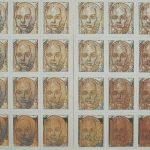
All Sisters, Small Change
[Nancy Freeman]
Categories: [2D & Wall-Hung] -
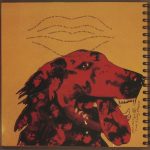
And You Thought the Eighties Were Bad
[Maurice Bastian] [Venantius Pinto]
Categories: [Artist Book] -

Back to the Future
[Robert Martin]
Categories: [2D & Wall-Hung] -
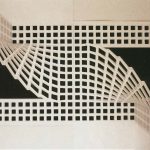
Bending and Twisting : Hypothesis #3
[Daniela Bertol]
Categories: [2D & Wall-Hung] -

Betty Furness Metamorphosis
[Rosalyn Muskovitz]
Categories: [2D & Wall-Hung] -
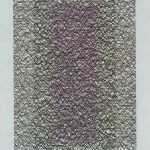
Biblio.Face
[Robert Steve Finley]
Categories: [2D & Wall-Hung] -
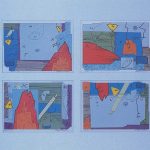
Box 71 Series (#6, #7, #8, #9)
[Harry Holland]
Categories: [2D & Wall-Hung] -
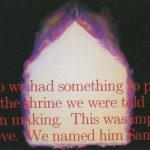
Bringing Samuel Home
[Karen Hillier]
Categories: [2D & Wall-Hung] -
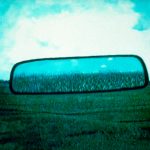
Bumper Crop
[Patricia Johnson]
Categories: [2D & Wall-Hung] -
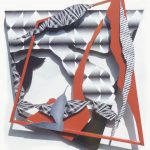
Caprice
[Sheriann Ki-Sun Burnham]
Categories: [3D & Sculpture] -
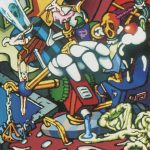
Chaos
[Bob Sabiston]
Categories: [2D & Wall-Hung] -
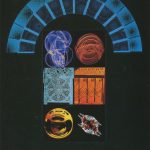
Chaos/Information as Ornament/A Tribute ...
[Ellen Sandor]
Categories: [3D & Sculpture] -
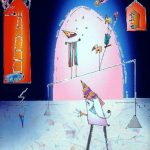
Circus
[Barbara Joffe]
Categories: [2D & Wall-Hung] -

Computer Jungle
[Shin Yusa]
Categories: [3D & Sculpture] -
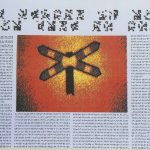
Crossing Sign Text Piece
[Brian Reffin Smith]
Categories: [2D & Wall-Hung] -
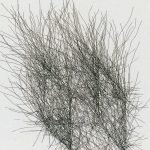
Cube 4
[Hans E. Dehlinger]
Categories: [2D & Wall-Hung] -
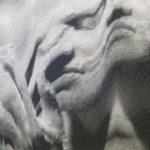
Curtain
[John Sturgeon]
Categories: [2D & Wall-Hung] -
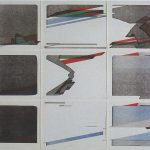
Dawn's Diagonals
[Colette Bangert] [Charles Bangert]
Categories: [2D & Wall-Hung] -
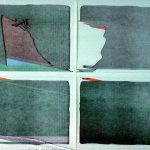
Dawn's Leaf
[Colette Bangert] [Charles Bangert]
Categories: [2D & Wall-Hung] -
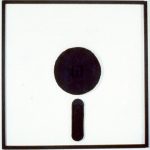
Disk
[Michael Cox]
Categories: [2D & Wall-Hung] -

Electric Anthill
[Michael Travers]
Categories: [Installation] [Interactive & Monitor-Based] -
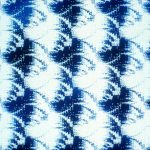
Emerging Forms
[Hillary Kapan]
Categories: [Installation] [Interactive & Monitor-Based] -
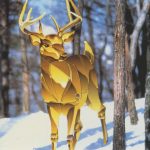
Essence of Form
[Michael S. Simmons]
Categories: [2D & Wall-Hung] -
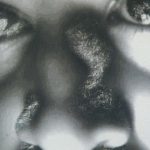
Exhibition Experiment #2A
[Robert Hamilton]
Categories: [2D & Wall-Hung] -
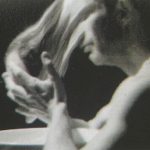
Face Mask
[John Sturgeon]
Categories: [2D & Wall-Hung] -
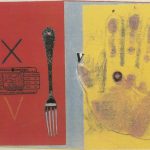
Five Volts
[Robert Flanagan]
Categories: [2D & Wall-Hung] -
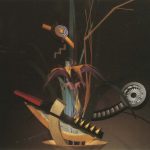
Flower Power
[Hiroshi Kamoi]
Categories: [2D & Wall-Hung] -
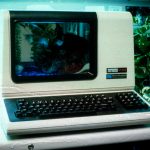
Folk Art Fish Tank
[Steve Anderson]
Categories: [3D & Sculpture] -
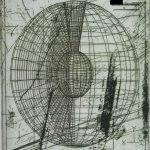
Global Pillage
[Steven M. Herrnstadt]
Categories: [2D & Wall-Hung] -

Head Wand
[John Sturgeon]
Categories: [2D & Wall-Hung] -
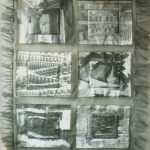
Home Sweet Home Quilt
[Patricia Hoffman]
Categories: [2D & Wall-Hung] -
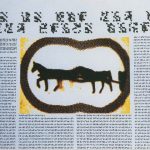
Horse Text Piece
[Brian Reffin Smith]
Categories: [2D & Wall-Hung] -
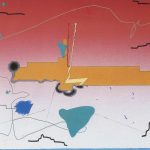
Innersoul
[Johann Jascha]
Categories: [2D & Wall-Hung] -
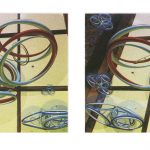
Invasion
[Kenneth Snelson]
Categories: [2D & Wall-Hung] -
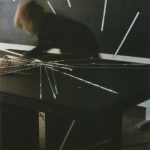
Klangmikado
[Waltraut Cooper]
Categories: [Installation] [Interactive & Monitor-Based] -
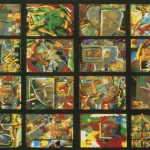
Leo Castelli
[Micha Riss]
Categories: [2D & Wall-Hung] -
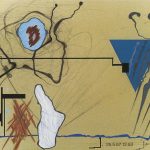
Line Brain
[Johann Jascha]
Categories: [2D & Wall-Hung] -
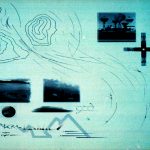
Manuscript 27
[John S. Banks]
Categories: [2D & Wall-Hung] -
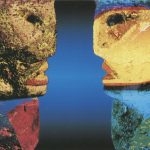
Medieval Figures
[Luz Bueno]
Categories: [2D & Wall-Hung] -

Missing Foundation 3
[Dennis H. Rexroad]
Categories: [2D & Wall-Hung] -
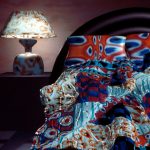
Mornings
[Marsha J. McDevitt]
Categories: [2D & Wall-Hung] -

Mud Shrine
[Karen Hillier]
Categories: [2D & Wall-Hung] -
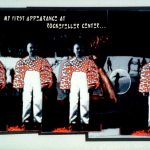
My First Appearance at Rockefeller Cente...
[Dennis H. Rexroad]
Categories: [2D & Wall-Hung] -

Night Cafe–Wurlitzer
[Sharon Calahan]
Categories: [2D & Wall-Hung] -
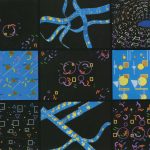
NLOOPS
[Vibeke Sorensen]
Categories: [Installation] [Interactive & Monitor-Based] -
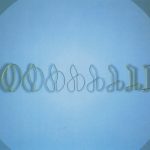
Number Series
[Kamran Moojedi]
Categories: [2D & Wall-Hung] -
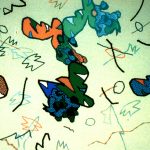
Once Over Sprightly
[Jim McLean]
Categories: [2D & Wall-Hung] -
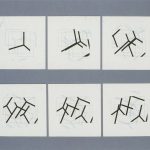
P-417-E
[Manfred Mohr]
Categories: [2D & Wall-Hung] -
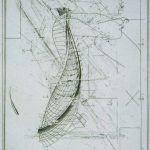
Phoenix Nov 03
[Steven M. Herrnstadt]
Categories: [2D & Wall-Hung] -
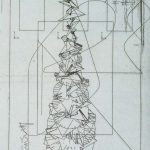
Phoenix Nov 06
[Steven M. Herrnstadt]
Categories: [2D & Wall-Hung] -
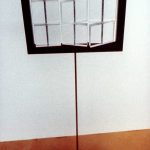
Pixel Frame
[Saba Oskoui] [Rodney Sitton]
Categories: [3D & Sculpture] -
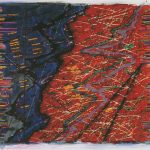
Red Ridge
[Karen Guzak]
Categories: [2D & Wall-Hung] -

Redtower.S
[Robert Steve Finley]
Categories: [2D & Wall-Hung] -

Ronfish
[Ron MacNeil]
Categories: [2D & Wall-Hung] -
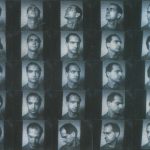
Scan/Look/Express
[Peggy Weil]
Categories: [Installation] [Interactive & Monitor-Based] -

Series - Does Appropriation Count? 1
[Kit Monroe]
Categories: [2D & Wall-Hung] -
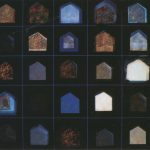
Shrine Quilt
[Karen Hillier]
Categories: [2D & Wall-Hung] -

Signal to Noise, pages 20, 21
[Craig Hickman]
Categories: [2D & Wall-Hung] -
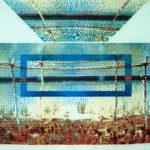
Silences
[Antonio Toscano]
Categories: [2D & Wall-Hung] -
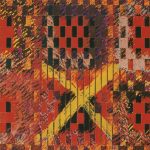
Six Holes, Five Read
[Tracy Colby]
Categories: [2D & Wall-Hung] -
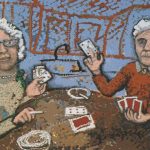
Smokers #4
[John Stamos]
Categories: [2D & Wall-Hung] -
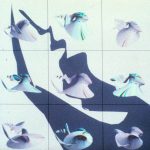
Spherical Corner
[Gerald Hushlak] [David Jevans]
Categories: [2D & Wall-Hung] -
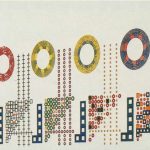
STL D26
[Mark Wilson]
Categories: [2D & Wall-Hung] -

Student 14
[Kathleen Kirka]
Categories: [2D & Wall-Hung] -
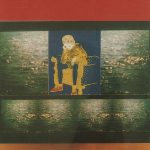
Syntagram #1
[James Lenavitt]
Categories: [2D & Wall-Hung] -

Text Text Piece
[Brian Reffin Smith]
Categories: [2D & Wall-Hung] -
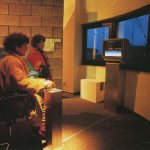
The Legible City
[Jeffrey Shaw]
Categories: [Installation] [Interactive & Monitor-Based] -
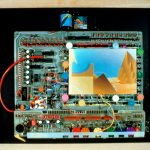
The Magic Revealed
[Herbert Paston]
Categories: [3D & Sculpture] -
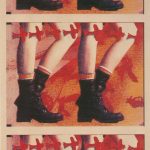
The Powers That Be
[Jacquelyn Ford Morie]
Categories: [2D & Wall-Hung] -
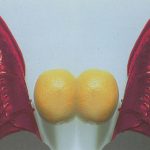
The Ruby Slippers
[Terry Rosen]
Categories: [2D & Wall-Hung] -

The Sprite Fantastic #4
[Jim McLean]
Categories: [2D & Wall-Hung] -
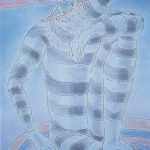
Thoughts of the Moon
[Barbara Nessim]
Categories: [2D & Wall-Hung] -
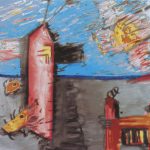
Tower
[Barbara Joffe]
Categories: [2D & Wall-Hung] -
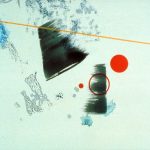
Transition 12
[Frances Valesco]
Categories: [2D & Wall-Hung] -
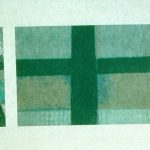
Triple Cross
[Karin Schminke]
Categories: [2D & Wall-Hung] -
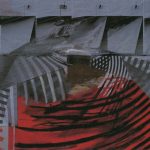
Two Skies
[Ana Z. Ursyn]
Categories: [2D & Wall-Hung] -
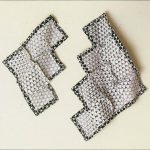
Two Triangles
[Susan Migliore]
Categories: [2D & Wall-Hung] -
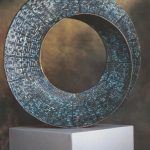
Umbilic Torus NC
[Helaman Ferguson]
Categories: [3D & Sculpture] -

Untitled
[Robert Mallary]
Categories: [Interactive & Monitor-Based] -
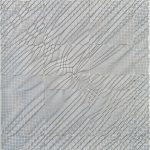
Untitled (reference #87)
[Jean-Pierre Hébert]
Categories: [2D & Wall-Hung] -
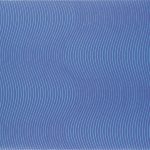
Vibrant
[Jürgen Lit Fischer]
Categories: [2D & Wall-Hung] -
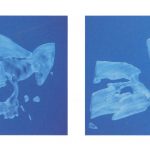
Views From Below: on the Eye of the Stor...
[Michael Johnson]
Categories: [2D & Wall-Hung] -
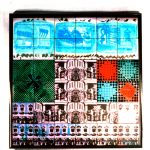
Voltaic/Transistor/Chip
[Brad Yazzolino]
Categories: [2D & Wall-Hung] -
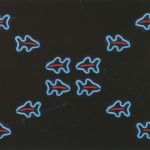
wall-o-fish
[Karl X. Hauser]
Categories: [Animation & Video] -
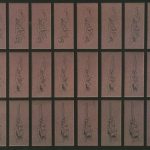
Woman's Work
[Rosalyn Muskovitz]
Categories: [2D & Wall-Hung]
Exhibition Writings and Presentations:
-
Title:
A Brief History of SIGGRAPH Art Exhibitions: Brave New Worlds
Author(s):
Category: Paper
Abstract Summary:
In 1981, The Association for Computing Machinery’s Special Interest Group on Computer Graphics (ACM/SIGGRAPH) sponsored its first exhibition of computer art in conjunction with the annual conference on computer graphics. The 1989 Art Show will be the ninth SIGGRAPH exhibition of computer-aided art. The present effort can not be understood fully without examining the background and scope of previous exhibitions. During this short history SIGGRAPH Art Shows have become important to computer artists since they are the major sites for the exhibition of new work.
[View PDF]Title: Art and the Information Revolution
Author(s):
Category: Paper
Abstract Summary:
The author expresses his opinion that new imagemaking technology is providing an interdisciplinary language and creating a requirement for generalists rather than specialists. This new technology is also initiating a paradigm shift in those disciplines that make use of it. Lack of acknowledgment of such effects, particularly in the area of higher education, could lead to significant problems that, in the longer term, could affect manufacturing industry and national economic performance. One solution is to involve practitioners of non-applied disciplines (such as fine arts and pure science and mathematics) that have already adapted to a similar paradigm change and whose perception of the new tools and techniques is likely to be less parochial and more flexible.
[View PDF]Title: Beyond Computer Art
Author(s):
Category: Paper
Abstract Summary:
‘Computer art’ and its systems of production are criticized, and some suggestions given to make it better.
[View PDF]Title: Cinema and the Code
Author(s):
Category: Paper
Abstract Summary:
The author and his colleagues suggest a criterion for evaluating artistic achievement in the medium of the digital moving image as distinct from other forms of cinema. This criterion is the extent to which the formal possibilities of digital imaging are employed as syntactical or linguistic elements, not simply as ‘special effects’. Four digital imaging techniques are discussed as possibilities for a new syntax and, hence, for the expansion of cinematic language.
[View PDF]Title: Computer Art in the Context of the Journal Leonardo
Author(s):
Category: Paper
Abstract Summary:
Since 1968, the journal Leonardo has published over 150 articles dealing with the uses of computers in the fine arts. Discussing the work of artists published in Leonardo, the author responds to a recent assertion by art theorist David Carrier that”… it is genuinely unclear to me whether any art using computers is truly significant”. It is argued that the significance of computer art must be viewed in a number of contexts. Within the context of the development of the computer itself, advances in computer graphics and animation have provided the artist with a powerful plastic medium under the artist’s control.
Most artworks produced, except in animation, either realise artistic ideas developed before the advent of the computer or are artistically equivalent to work produced in other media. The impact is significant in the context of the commercial and applied arts. Contemporary artists, as the colonisers of technology, are producing significant artworks as collaborators in Renaissance teams of artists, scientists and technologists. In the larger context of the history of art, however, the significance of contemporary computer art work is not yet clear. It is argued that artistic significance should be sought in works that could not have been made without the use of a computer.
Such works must involve the particular attributes of computers, such as their application in interactive situations, their capability for artificial intelligence, their function in networks with telecommunications media, and their ability to allow the synthesis of sound and vision in timebased art forms. The lack of adequate theoretical, historical and critical frameworks is currently the largest impediment in assessing the significance of computer art.
[View PDF]Title: Computer Imagery: Imitation and Representation of Realities
Author(s):
Category: Paper
Abstract Summary:
Contemporary theory in philosophy, aesthetics and cognitive/social sciences stresses the embedment of cultural and historical conventions in art and technology. Computer imagery for aesthetic/artistic or technical/scientific purposes have these conventions embedded in them and consequently reflect larger models of humanly constructed cultural reality. Careful analyses of the form, content and practice of computer graphics are proposed to reveal views of reality embedded in technology and in models generated by the technology.
[View PDF]Title: Dataism
Author(s):
Category: Paper
Abstract Summary:
Dataism is a term coined to designate computer art. In contrast to the iconoclasm of Modernism, in general, and Dadaism, in particular, Dataism restates traditional aesthetics through formal practices. Dataist works are not singular objets d’art, but algorithmic procedures and digital data bases that have a symbolic description. They can be perfectly duplicated and widely distributed. Dataist artworks can appear to exist in three dimensions and move in the time dimension, but they may be entirely synthesized, that is, a manifestation of imagination.
[View PDF]Title: Emergent Aesthetics - Aesthetic Issues in Computer Arts
Author(s):
Category: Paper
Abstract Summary:
The production of art, as much as any other production, takes place in the context of human interaction-with others, with nature, with tools, with artifacts, and with ideas from times passed. Artistic work, more than any other, is probably a projection of the experiential structure of the act of producing artifacts (or events) with qualities socially acknowledged as artistic and values culturally celebrated as aesthetic. Throughout history, the patterns of human interaction have continuously changed, and so has art. Nonetheless, changes like the ones we experience today are unprecedented, requiring that we understand that the condition of art is probably more dependent than ever on the condition of humanity in general, and of science and technology in particular.
[View PDF]Title: Fractals and an Art for the Sake of Science
Author(s):
Category: Paper
Abstract Summary:
A new form of art redefines the boundary between ‘invention’ and ‘discovery’, as understood in the sciences, and ‘creativity’, as understood in the plastic arts. Can pure geometry be perceived by the ‘man in the street’ as beautiful? To be more specific, can a shape that is defined by a simple equation or a simple rule of construction be perceived by people other than geometers as having aesthetic value – namely, as being at least surprisingly decorative – or perhaps even as being a work of art? When the geometric shape is a fractal, the answer is yes. Even when fractals are taken ‘raw’, they are attractive. They lend themselves to ‘painting by numbers’ that is surprisngly effective, even in the hands of the rank amateur. And the true artist’s sensibility finds them a novel and attractive support.
[View PDF]Title: Mathematics As an Artistic-Generative Principle
Author(s):
Category: Paper
Abstract Summary:
The author defines a mathematical discipline that is devoted to the generation of artistic images. The practical implementation of the underlying theory is possible today with the aid of computer graphics systems.
[View PDF]Title: The Image in Art and 'Computer Art'
Author(s):
Category: Paper
Abstract Summary:
In this essay the author takes a cursory look at the increasing range of applications of computers to art and design practice and questions some of the assumptions that have been made about their use. The proliferation of computer imagery in society as part of the video culture and its effects on our attitudes towards digital representation are emphasised. This leads to a redefinition of the intimacy of the relationship between artist and art object. Such issues contribute to the comparative study of digital media and physical/mechanical media and the computer’s impact on the creation and apprehension of imagery.
[View PDF]Title: The Proceduralist Manifesto
Author(s):
Category: Paper
Abstract Summary:
‘Computer art’ has become a meaningless term, because soon virtually all art will be computerized in some way or another. The author introduces the concept of proceduralism as a label to represent a special class of art, one that constructs images using abstract qualitative and quantitative parameters, rather than simulates classical drawing and painting. This approach to making art ditters radically from drawing and painting approaches because the picture-making process is detached from the picture. The net result is that an entirely new area of creativity has been unveiled for the artist. As such, proceduralism is a logical successor to conceptual/process art; it is a major art movement and a new medium.
[View PDF]Title: The Tao of Postmodernism: Computer Art, Scientific Visualization and Other Paradoxes
Author(s):
Category: Paper
Abstract Summary:
The author suggests that a paradigm shift must occur in art criticism to assimilate the nonlinear branching of aesthetic activities in our era. These activities include computer art and scientific visualization, and they reflect many issues addressed in postmodern dialogue such as our image-synthetic, “simulacrum” society. Postmodernism unexpectedly informs most disciplines, including the natural sciences, and is a cultural systemic norm that relates to our electronic information age. The Taoist concept of oneness is used as a metaphor for the interrelatedness of electronic-mediated societies, and this social connectedness explains the enfolding and complex nature of contemporary aesthetic activity. A cybernetic paradigm might provide a better model for criticism than modernism or postmodernism, since this paradigm presents a holistic view that concentrates on creativity and the organization of interrelated systems. The convergence of art with science is assumed as a logical interdisciplinary outgrowth of this electronic oneness.
[View PDF]Title: The Wizard of Ethereal Pictures and Virtual Places
Author(s):
Category: Paper
Abstract Summary:
Renaissance artists constructed pictorial space using algorithms based on Euclidean geometry. Computer artists use algorithms based on the analytic geometry of Descartes to compute pictures as well as the subjects in them. An examination of the workings of these two different types of algorithm reveals that the computer offers a radical new approach to making art, which is not yet well understood. Postmodern algorithms for picturemaking are more evanescent than their Renaissance counterparts because computers process information conceptually instead of storing it physically. The computer is neither a passive medium nor a pliant tool, but an active creative partner.
[View PDF]Traveling Art Show Chair(s):
- Patric D. Prince
-
- California State University




